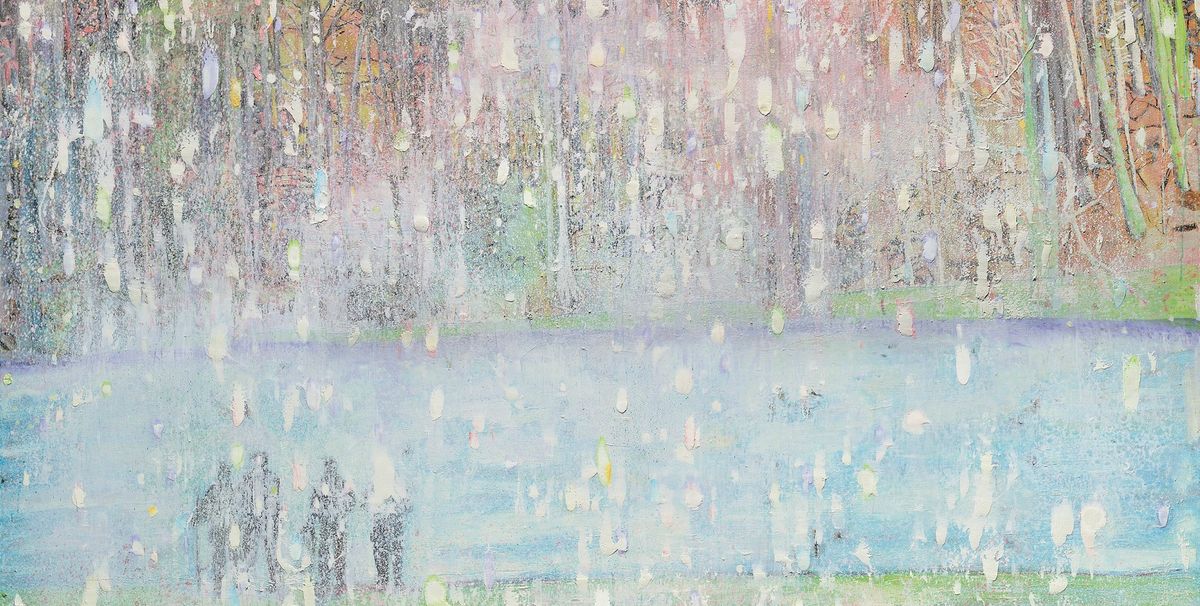Christie’s, Sotheby’s and Phillips made a total of £229.1m (with fees) at their Post-war and contemporary evening sales last month, up 51% on the £152.2m raised in February last year, and reason enough for Francis Outred, Christie’s head of Post-war and contemporary art for Europe, to declare that “the market is back”.
Meanwhile, the tally for Impressionist, Modern and Surreal art at Christie’s, Sotheby’s and Bonhams was £337.7m (with fees), which represented an 129% increase on last year’s total haul of £147.5m (with fees). Sotheby’s combined total for Impressionist, Modern and Surreal art—£194.8m (with fees)—was the highest-ever total for an evening auction in London. “When I worked [at Christie’s] a downturn usually lasted a few years; now it seems to last a few months,” says Thomas Seydoux, an art adviser and former chairman of Impressionist and Modern art for the house.
Asian buyers showed their strength this season, with consistent bidding and underbidding at all sales, aided no doubt by the weakness of the pound and by the fact that the auction houses had rescheduled their sales to steer clear of Chinese new year. There was a notable buzz of Asian clients on the phones at Christie’s, which has offices and staff in Beijing and Shanghai. At Sotheby’s it seemed that a majority of the phone bids for top works came through the firm’s New York specialists, with the added firepower of Amy Cappellazzo and Adam Chinn of Art Agency, Partners. However, the most expensive lot in Sotheby’s contemporary sale, Gerhard Richter’s Eisberg (1982), sold on the phone to a bidder from Asia for £17.7m with fees. “Increasingly, American and Asian clients are converging on the same things, which tells us Asian collectors are identifying quality more now, and that’s a good sign,” Seydoux says.
Sotheby’s was more aggressive in its use of guarantees this season. Of the 61 lots in its Post-war and contemporary sale, 15 were guaranteed either by the house or a third party. They sold for a total of £55m–46.6% of the overall value of the auction. The house guaranteed eight lots in its Impressionist and Modern sale, representing 52% of the overall value, though strong bidding ensured most of the works sold above estimate. At Christie’s Post-war and contemporary sale, guarantees were slightly down from last year, representing 21.6% of the overall value of the sale compared with just under 30% in February 2016. There were no guarantees in its Impressionist and Modern sale, and only three lots guaranteed in the Surrealist sale. Phillips was also more prudent in its use of guarantees. After the sale, Edward Dolman, Phillips’s chairman and chief executive, acknowledged that the house could have been “a bit more aggressive”.
Despite the encouraging result, Seydoux offers a word of caution: “I hope that profitability and the bottom line don’t encourage the houses to take too may risks. The market is still fragile and the internal pressure to get consignments for May and June is huge.”
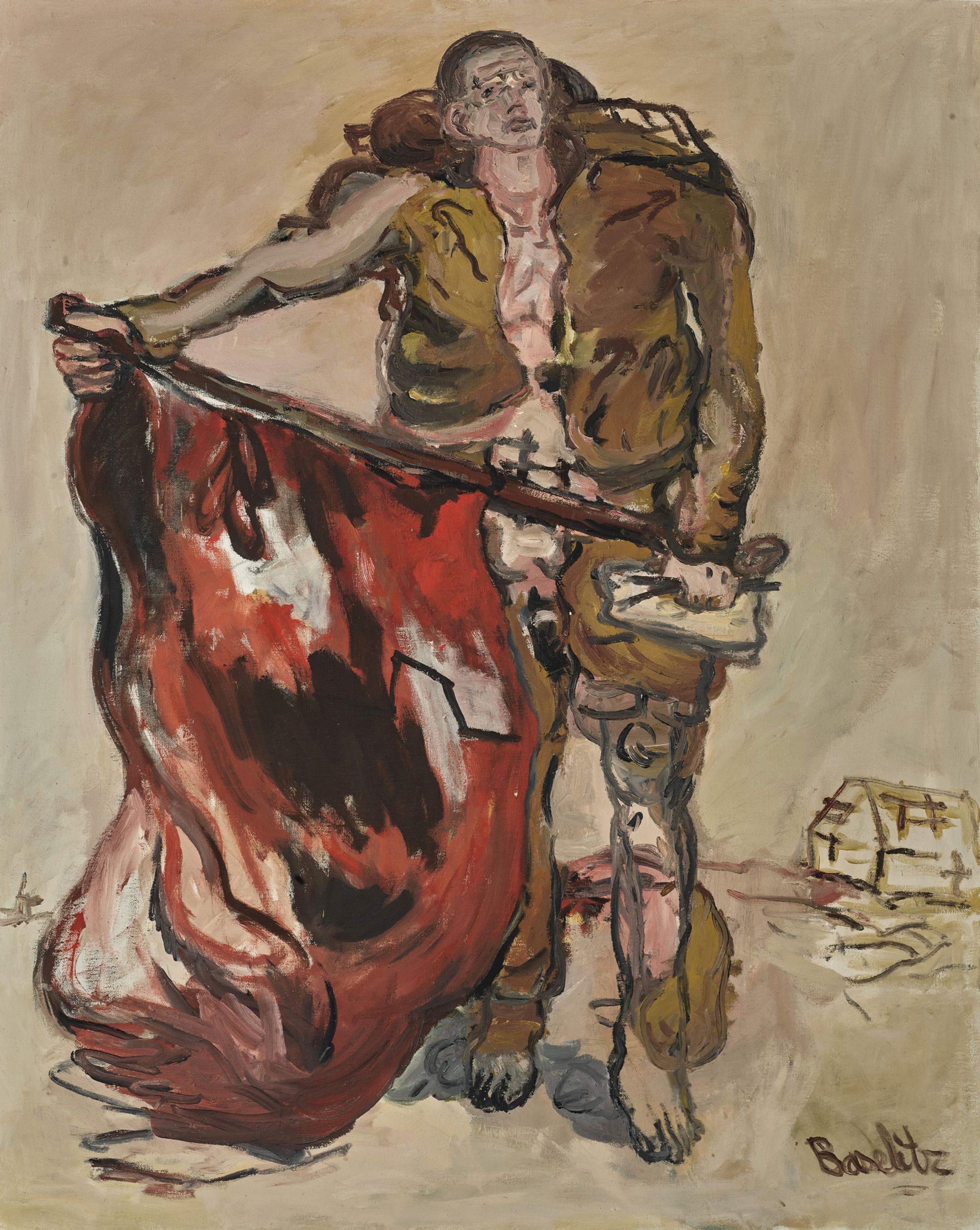
Auction highlights: three heavyweights and a relative newcomer
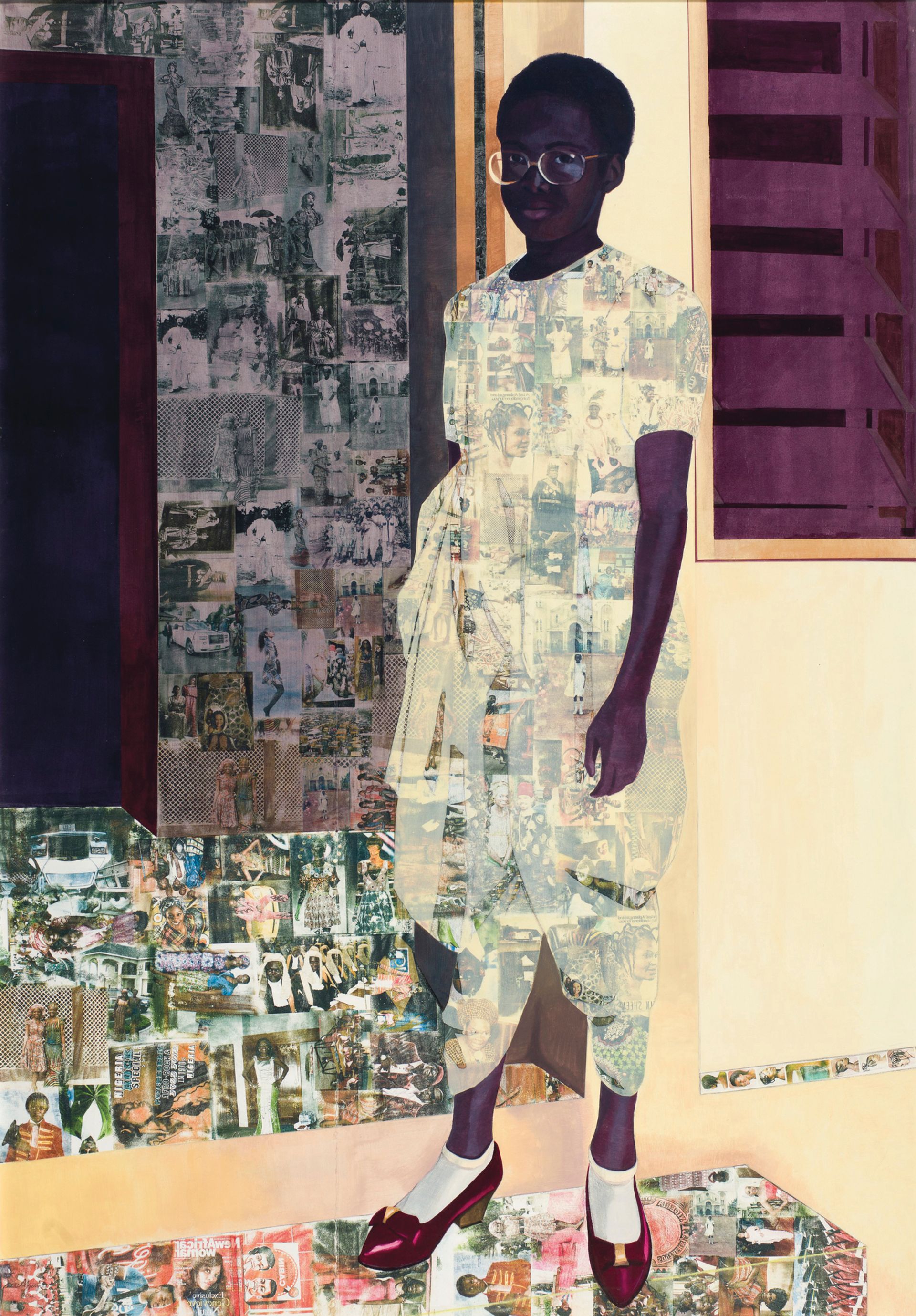
Njideka Akunyili Crosby, The Beautyful Ones (2012)
Christie’s
Only three works by the Nigerian-born, California-based artist Njideka Akunyili Crosby have come to auction since September 2016, but since then her prices have risen nearly 3,200%. Crosby’s record was last broken at Christie’s in London on 7 March when The Beautyful Ones (2012) more than tripled its high estimate of £600,000 to sell for £2.1m (£2.5m with fees). The work was guaranteed by a third party.
The 33-year-old’s canvases are also scarce on the primary market. Crosby only produces around seven or eight paintings a year and they are all bought by museums. “No one can buy her work from her galleries; there are currently 18 museums on the waiting list,” says Francis Outred, Christie’s head of Post-war and contemporary art in Europe, who describes Crosby as “one of the most exciting artists to emerge in the past five years”.
The art market has traditionally been biased against women artists as well as African-Americans, but Crosby, who is said to consider herself an American artist as well as an African one, is cracking the glass ceiling. As the New York art adviser Lisa Schiff said after the Christie’s auction: “Very few female artists break through the male dominated auction price ceiling–unless they are no longer of this world. It is great to see a young black woman reach these heights.”
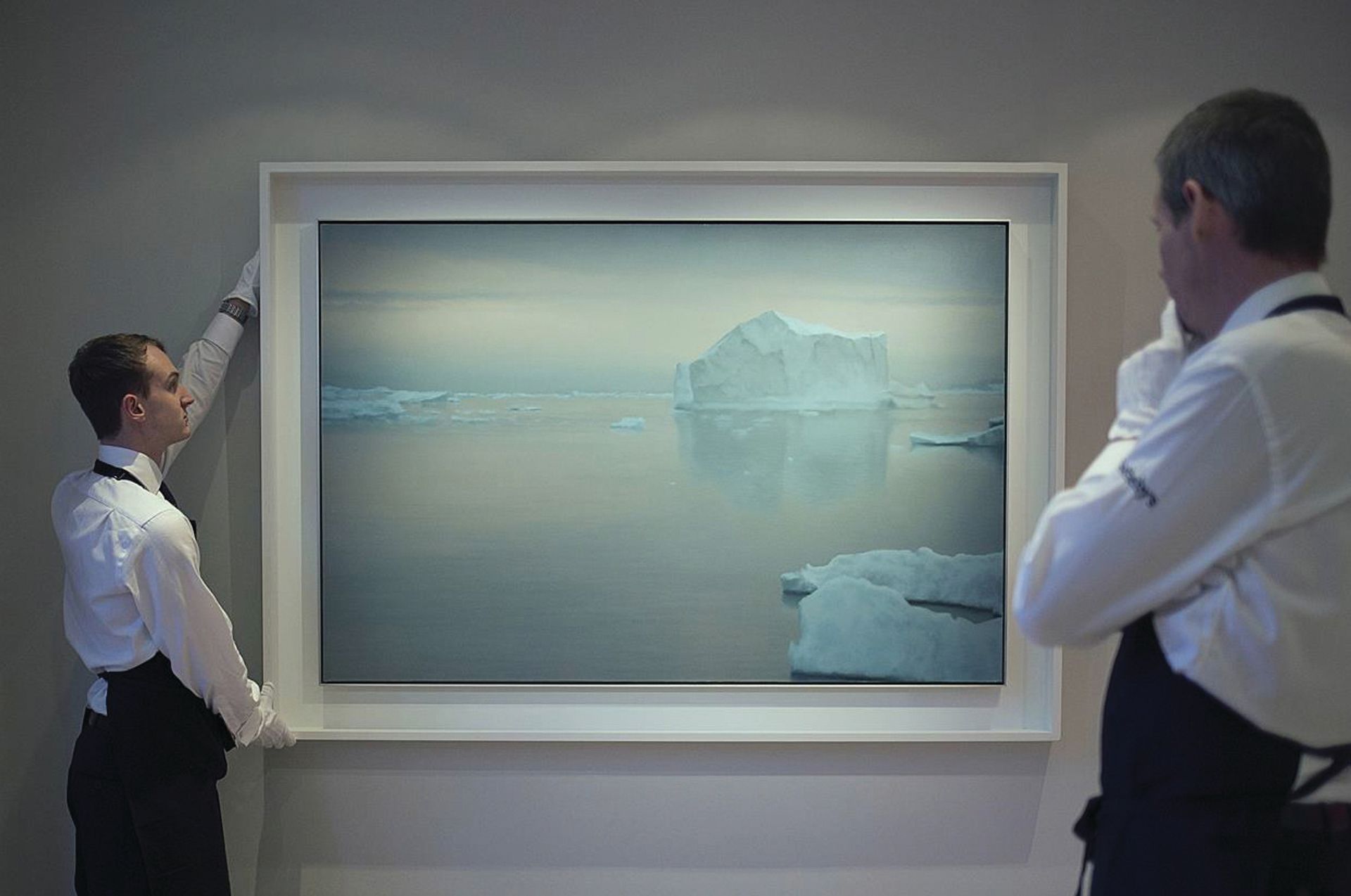
Gerhard Richter, Eisberg (1982)
Sotheby’s
Gerhard Richter has dominated the art market for the past five or six years. His late, colourful abstract paintings are most sought after; one such work sold for £30.4m in 2015—a record for the priciest work sold by a living European artist.
But it was one of Richter’s rare landscapes that topped the contemporary sales in London last month. Eisberg (1982), the largest of only three iceberg paintings he ever made, sold at Sotheby’s through a representative for Asia for £15.6m (£17.7m with fees, est £8m-£12m). Alex Branczik, the senior director and head of contemporary art for Europe at Sotheby’s, says the work is particularly interesting because Richter mostly paints “very mundane landscapes”, whereas Eisberg “is probably as close as he ever gets to a more Romantic work”.
The painting was one of 15 works by German artists on the block at Sotheby’s. Together they made £48.1m (with fees) against a low estimate of £26.7m, accounting for 40.8% of the overall sale total. Of the hype surrounding Post-war German artists at the moment, Gordon VeneKlasen, a partner at Michael Werner gallery, says there is a concerted effort to link artists such as Richter, Sigmar Polke, Jörg Immendorff and Albert Oehlen. “They are a formidable group,” he says.
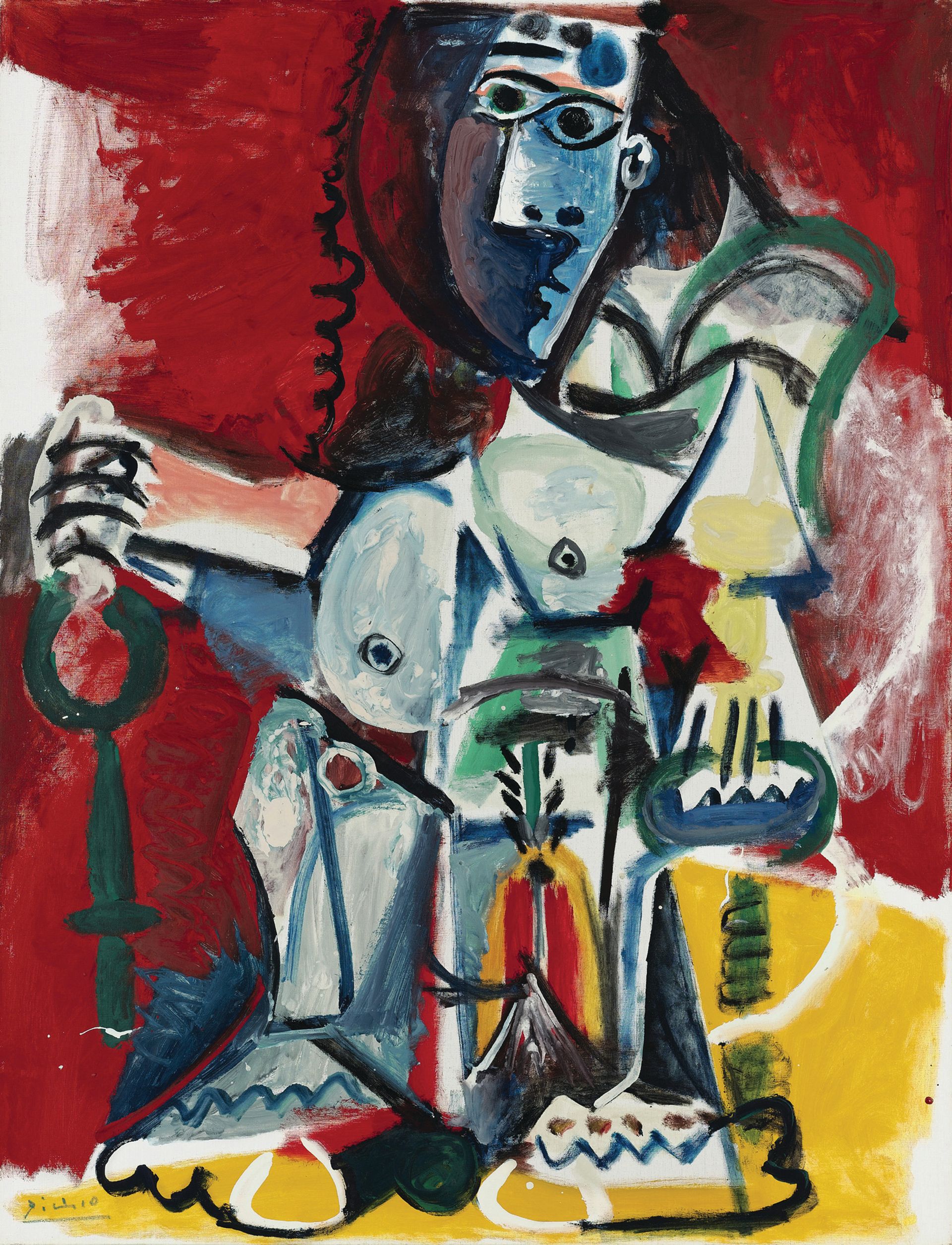
Late works by Picasso
Sotheby’s
Sotheby’s sold five works by Picasso dating from the 1950s onwards. There had been “some hesitation with late works by Picasso last year,” says James Mackie, the head of the Impressionist and Modern art at Sotheby’s London. These works however, which spanned more than ten years, not only show the variety of Picasso’s output, but the depth of interest for all his work.
“Colour is a factor many collectors look for,” Mackie says, and Picasso’s bright red canvas work Femme nue assise (1965) sold for £13.7m with fees, above estimate, and saw competitive bidding from the Nahmad family in the room, against the house’s Amy Cappellazzo and Patty Wong on the phone. Another piece, a brightly coloured oil on corrugated cardboard titled Buste d’homme (1969), sold with fees for a fraction over its upper estimate of £12m.
On the other hand, a much more sober, monochrome oil on board portrait of Françoise Gilot, Femme assise dans un fauteuil sur fond blanc (1953), fetched £12.1m with fees, also above estimate, after a lengthy phone bidding between three clients. The rare work had first been in Picasso’s then his son Claude’s collection, and has also been shown at the Guggenheim in New York—“this work ticked all the boxes,” Mackie says. Of the five late works, only one sold for a hammer price under the lower estimate.
Just as Warhol is thought of as an indicator of the health of the contemporary art market, Picasso is “in many respects a bellwether for the Impressionist and Modern market because he operated across all media and price points”.
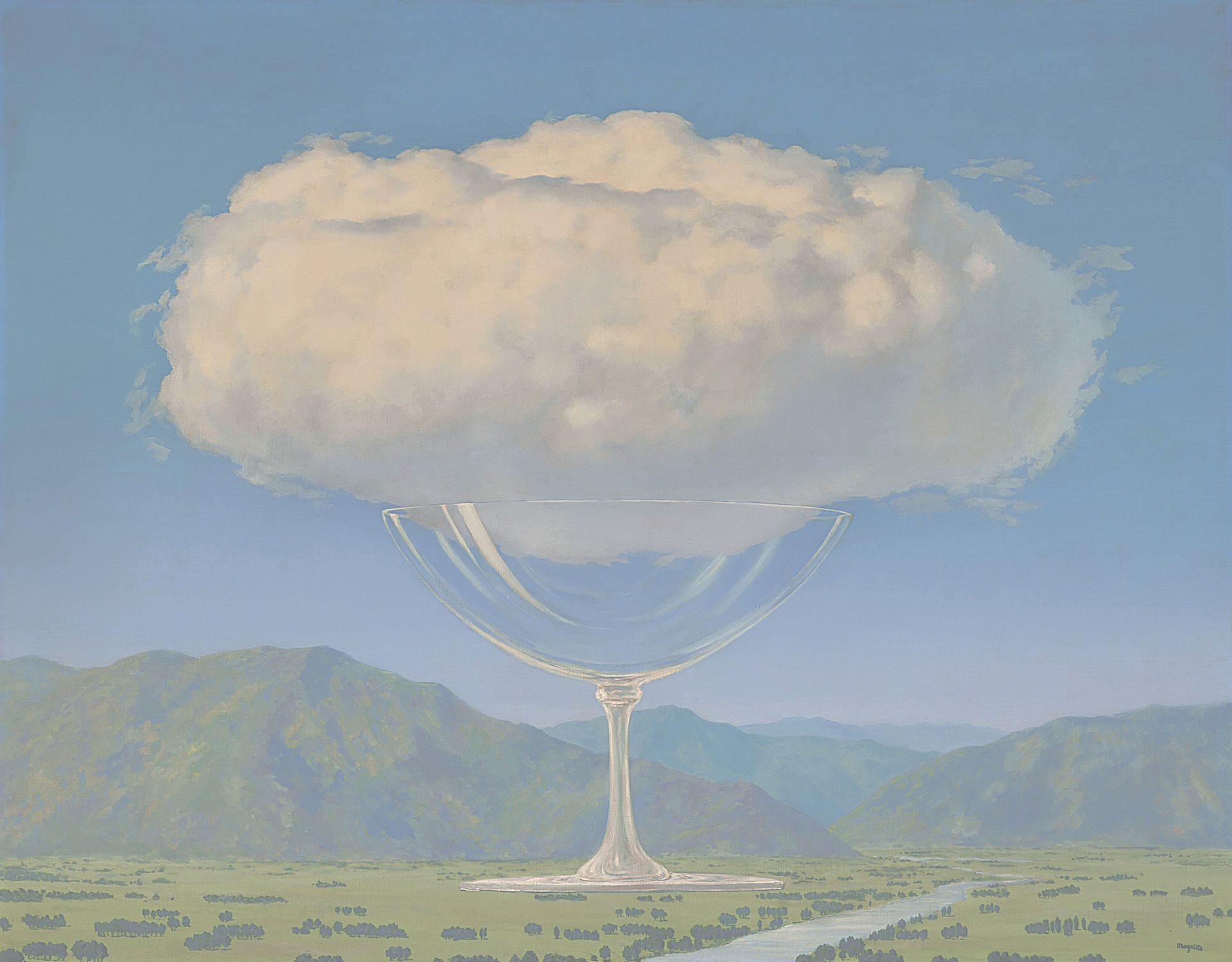
René Magritte
Christie’s
Two large works by the Surrealist artist René Magritte, La Corde Sensible (1960) and Le Domaine d’Arnheim (1938), were respectively the second and third most expensive lots in Christie’s Impressionist, Modern and Surrealist sale. La Corde Sensible (1960), which carried a guarantee and sold for £14.4m with fees, set an auction record for the artist. Unlike many of his other themes and motifs, Magritte only painted this one version (though he made several drawings). “It’s one of the most striking works by Magritte that we’ve sold in 20 years on account of its size, colour and unique subject matter,” says Olivier Camu, the deputy chairman of Impressionist and Modern art and head of the Surreal sale at Christie’s.
While Magritte’s later works tend to have the broadest appeal to collectors, Le Domaine d’Arnheim (1938), reportedly being sold by the the Russian billionaire Dmitry Rybolovlev, fetched £10.2m with fees, the third highest price for the artist at auction. “Many of Magritte’s best ideas started to emerge in the early 1930s, and this was the first version of the subject and unseen on the market since 1981.” Camu says.
Magritte’s work is generally in good supply and packs a stronger punch than that of his Surrealist peers. “His work appeals even more widely than Dali,” Camu says, “because it is purely conceptual and not attached to any particular culture or time period. The top works are conceptual ideas that permeate internationally through cultures in a way that other paintings don’t.”
Auction Results Post-war and contemporary Evening Sales
Christie’s
7 March
Total: £82.2m (£96.4m with fees)
Estimate: £67.6m-£101.6m
Sold by lot: 95%
Sotheby’s
8 March
Total: £100.7m (£118m with fees)
Estimate: £80.9m-£112.6m
Sold by lot: 93%
Phillips
8 March
Total: £12.2m (£14.7m with fees) Estimate: £13.3m-£19.2m
Sold by lot: 82%
Bonhams
8 March
Total: £5.1m (£6.3m with fees)
Estimate: £4.15m-£5.9m
Sold by lot: 93%
Impressionist, Modern and Surrealist Evening sales Christie’s
Impressionist & Modern
28 February
Estimate: £65.8m-£97.7m
Total: £80.6m (£94.3m with fees)
Sold by lot: 92%
Art of the Surreal
28 February
Estimate: £32.8m-£44.9m
Total: £37.3m (£42.6m with fees)
Sold by lot: 91%
Sotheby’s
Impressionist & Modern
1 March
Total: £154.3m (£177m with fees)
Estimate: £137.1m-£179.5m
Sold by lot: 89%
Surrealist Art
1 March
Total: £14.8m (£17.7m with fees)
Estimate: £13.3m-£18.1m
Sold by lot: 90%
Bonhams
Impressionist & Modern
8 March
Total: £5m (£6.1m with fees)
Estimate: £4.2m-£6.2m
Sold by lot: 85%
Please note: presale estimates do not include premiums; refer to auction houses for their fee structures


